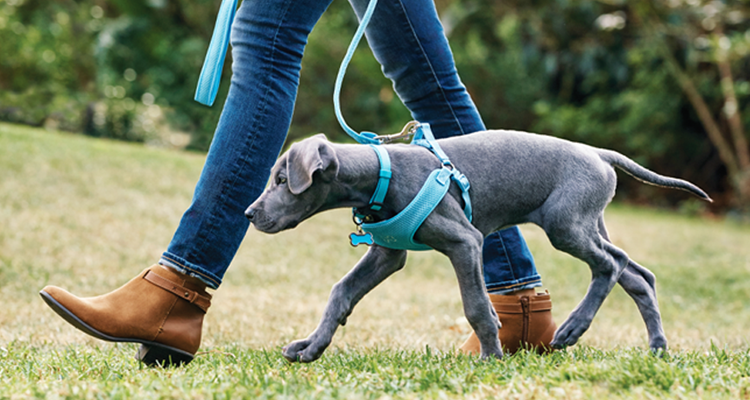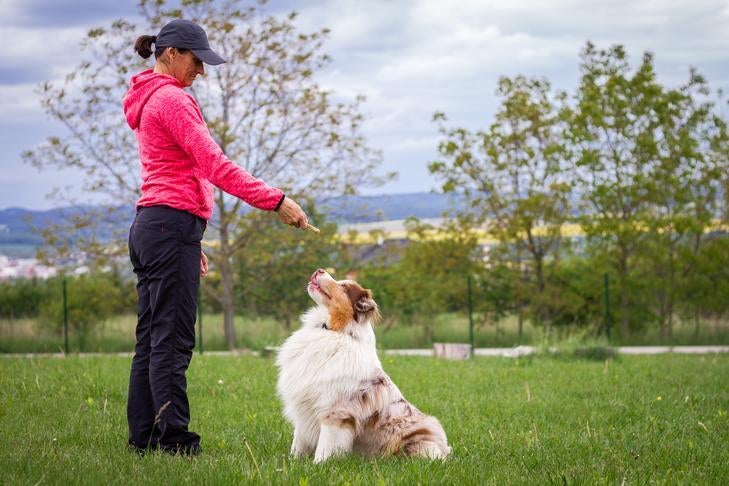Beginner's Guide to Successful Pet Dog Training in your home
Effectively educating a pet at home requires a nuanced understanding of canine habits and effective communication techniques. Developing clear training objectives, utilizing high-grade incentives, and maintaining consistency across family participants are essential elements. Integrating training into day-to-day regimens can boost both engagement and retention.
Comprehending Pet Dog Actions
Recognizing canine behavior is necessary for efficient training and fostering a harmonious relationship between humans and their canine buddies. Canines communicate largely via body movement, articulations, and faces, making it important for owners to interpret these signals precisely. Acknowledging habits such as tail wagging, roaring, or cring can offer insights right into a pet's psychological state and intents.

Typical behavior issues, such as aggressiveness, stress and anxiety, or too much barking, typically originate from misconceptions or unmet demands. Observing and dealing with these problems immediately can prevent acceleration and make certain a positive training experience. By promoting a deep understanding of pet dog behavior, owners can tailor their training techniques to match their canine friends, ultimately bring about a mannerly and contented family pet.
Crucial Educating Tools
A fully equipped training area can dramatically boost the effectiveness of canine training in your home. Necessary training devices ensure that both the canine and the trainer can participate in efficient sessions that foster knowing and bonding.

Spending in a durable chain and a comfortable, well-fitting collar or harness is vital for safety and security and control. These tools aid establish boundaries and make sure the canine stays protected throughout training. Furthermore, a marked training area, without interruptions, help concentration for both the pet and the fitness instructor.
Educating aids such as training pads, cones, or dexterity devices can also improve the experience by presenting variety and difficulties. Finally, having a notebook or digital application for tracking progression can be important, permitting you to note successes and areas for improvement. Using these vital devices will certainly create a favorable training environment and lay the foundation for efficient understanding.
Creating an Educating Regimen
Developing a consistent training routine is necessary for effective canine training in the house. A well-structured regular not just helps in strengthening wanted actions yet also supplies your pet dog with a complacency and predictability. To develop a reliable training routine, begin by identifying certain training objectives, such as fundamental commands, leash strolling, or house-breaking.
Pick an assigned time each day for training sessions, ideally when your pet is sharp and receptive. Procedure needs to be short, around 5 to 15 mins, to navigate here maintain emphasis and protect against exhaustion. Consistency in timing and atmosphere will improve your canine's discovering experience.
Include training right into everyday activities to reinforce abilities. As an example, method commands during walks or mealtime, which integrates learning right into all-natural regimens. Additionally, remain versatile and adjust the regular as needed, fitting your pet's power levels and mood.
Favorable Support Methods
Positive support methods are fundamental to efficient dog training, promoting preferred behaviors via incentives instead of penalty. This technique utilizes favorable stimuli, such as treats, appreciation, or playtime, to encourage canines to duplicate certain activities. The foundation of this technique is timing; incentives need to be given quickly adhering to the wanted actions to create a clear association.
When carrying out positive support, it is vital to choose incentives that are motivating for your pet. High-value deals with, such as small pieces of hen or cheese, can be especially efficient during training sessions. Additionally, differing the incentives can preserve your pet dog's interest and interest.
Beginning with simple commands, like "sit" or "stay," and slowly progression to more complicated jobs. Uniformity is vital; make sure that all household participants utilize the very same commands and benefit systems to prevent complication.
Moreover, it is crucial to continue to be client and stay clear of irritation. Dogs, like people, find out at their own speed. By fostering a helpful training setting via positive support, you can boost your dog's discovering experience while reinforcing the bond between you and your hairy companion, preparing for successful training results.
Common Educating Obstacles
While educating a dog at home can be a gratifying anchor experience, it usually comes with a set of usual difficulties that can check both perseverance and uniformity. One widespread problem is disturbance. Dogs may come to be easily sidetracked by noises, motions, or perhaps scents in their atmosphere, making it hard to preserve their focus during training sessions.
One more difficulty is variance in commands and reinforcement. It can hinder and puzzle the pet dog development if family members make use of various hints or benefits. Establishing a unified approach is vital for reliable communication.
Additionally, dogs can experience aggravation or tension, particularly if they do not understand what is expected of them. This can lead to unfavorable habits, such as chewing or barking.
Ultimately, the timing of reinforcement is vital (Dog training). Delayed incentives can reduce the efficiency of favorable reinforcement, as pet dogs may fall short to link the behavior with the incentive
Getting over these difficulties calls for dedication, clear communication, and an organized training plan. Identifying and dealing with these common challenges will lead the way for a much more enjoyable and effective training experience in the house.
Verdict
Finally, effective canine training in the house necessitates a comprehensive understanding of canine actions and effective interaction approaches. By developing clear training objectives and utilizing high-quality treats together with positive support, the training procedure becomes a lot more rewarding for both the pet and the fitness instructor. Versatility, uniformity, and perseverance are crucial components that assist in understanding. Ultimately, incorporating training right into day-to-day regimens enhances the bond between canine and owner, making the experience both productive and satisfying.
Developing a constant training regimen is essential for reliable pet training at home.Favorable support techniques are basic to effective pet dog training, advertising preferred behaviors through rewards rather than punishment (Dog training). By promoting a helpful training environment via favorable support, you can improve your dog's knowing experience while reinforcing the bond in between you and your fuzzy companion, laying the groundwork for effective training outcomes
In conclusion, effective canine training at home necessitates a detailed understanding of canine habits and efficient communication websites strategies. By developing clear training objectives and making use of top notch treats along with positive support, the training procedure becomes more satisfying for both the trainer and the dog.